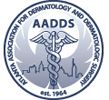
Do you have problems with spider veins? These veins are small clusters of red, purple, and blue veins, mostly found on the thighs, calves, and ankles. They can begin at any age and affect over half the population of women. These veins can be a problem of the past with a simple procedure called sclerotherapy.
So you might ask yourself how you got these veins to begin with. Spider veins can be produced from a variety of causes, a few of these can include heredity, pregnancy, weight gain or fluctuation, standing for long periods of time, and certain medications that affect hormones. Spider veins do differ from varicose veins which are larger, darker in color and they tend to bulge. Varicose veins can also be painful, whereas spider veins are typically asymptomatic.
- What is sclerotherapy?
- Sclerotherapy is a type of treatment for “spider” veins, and small to medium size varicose veins. It is a series of injections of a saline or chemical solution into the actual vein using a very fine needle. The treatment sessions last about 15 minutes and the veins actually disappear before your eyes. There may be some slight bruising noted at the sites of injection however this is minimal. It might take more than one treatment session depending on the extent of your spider veins.
- Two types of solutions are commonly used in sclerotherapy. You may have heard of the “saline” injections. This solution is very hypertonic salt water which causes the cells lining the blood vessel to become irritated and inflamed after which the body breaks down the damaged vein and absorbs it, ultimately eliminating the problem vein. Saline injections may cause cramping or muscle aches at the site of injection. Dr. Kayal uses a new solution called Polidocanol, which has a similar mechanism but is much better tolerated. No pre-treatment patient preparation is needed and most patients describe minimal discomfort.
- Risks related to sclerotherapy
- There are some risks involved in using the procedure. Although the side effects are rare every patient should be aware of them. The most common side effect is slight discomfort during the procedure which may be alleviated by a numbing cream (topical lidocaine) or an ice pack. Other possible complications include pigment alteration (hyperpigmentation), itching, allergic reaction to the solution, and ulceration. Most of these risks can be avoided by using a well trained physician, avoiding direct sunlight after the procedure, and following the pre and post operative instructions.
- Procedure
- Prior to having sclerotherapy done you will need to have a consultation with your physician. At this time your practitioner will decide if sclerotherapy is the right treatment choice for you. Once this is decided you will then schedule your sclerotherapy appointment. The actual procedure will involve many steps however it will only last about 20 minutes. It is an outpatient procedure and no anesthesia is used so that you will be able to leave right after the visit. The procedure will begin by you changing into a gown and having the area where your veins are cleaned. The physician will then begin the injection process. There will be multiple injections of a solution into the veins, this may cause a mild stinging sensation, however, it should not last too long. The sites will then be covered by cotton gauze and tape. This dressing will need to stay on for 48 hours. You will also need to wear compression stockings. or thigh high socks which you should be able to pick up from your physician’s office. These stockings should be worn for at least 7 to 10 days. You should know that right after the procedure your veins might actually look worse, due to some mild bruising, however this is only temporary. It is important to walk after the procedure to prevent any clots from forming. A one month interval should be used before starting a second treatment. After one month optimal results should be seen. Recurrence of the same vein treated rarely occurs, however, new “spider” veins may form in other areas requiring subsequent treatments.
- How many treatments are needed?
- The number of treatments needed varies from patient to patient depending on the size and quantity of veins to be treated. Subsequent treatments are usually scheduled every four to six weeks to allow time for the body to respond to treatment. Best results require patience as the body takes time to respond to the injections. Your body will continue to heal and “fade” injection sites for months after treatment.
Spider veins are a very bothersome problem to have, which is very common in the female population. Although they pose no great medical threat many people would like to have them removed for cosmetic reasons. There are many treatment options to get rid of these veins, however sclerotherapy is a very convenient and cost effective treatment plan. For those patients who are fearful of needles or who cannot tolerate sclerotherapy, we can now offer laser surgery for leg veins. Spider veins do not have any useful function and eliminating them will not affect your circulation. Reducing or eliminating varicose veins can improve your circulation and symptoms of heaviness, aching, and fatigue. If you are interested in talking with a physician about this type of therapy please call Dr. John Kayal for your free cosmetic consultation.
Posted on behalf of
141 Lacy Street, Suite 200
Marietta, GA 30060
Phone: (770) 426-7177
FAX: (770) 426-7745
Email: kayaldermatology@gmail.com
Mon-Fri: 7:30 am – 5:00 pm







